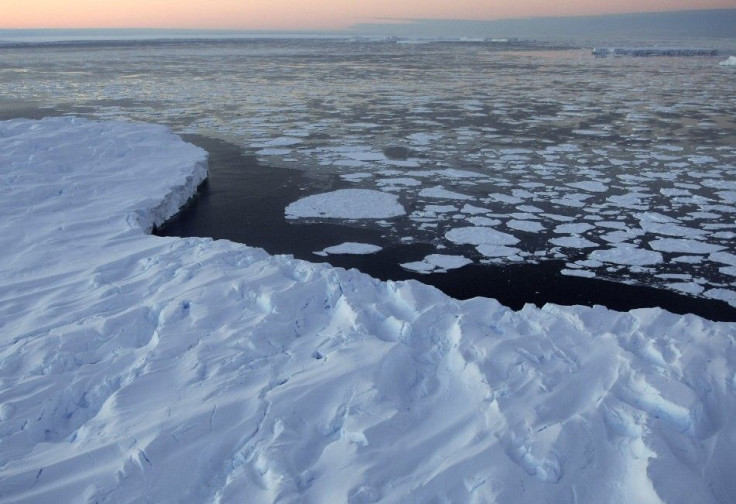Japan Tsunami Tore Off Huge Chunk of Antarctica Ice Shelf

The tsunami that devastated Japan in March 2011 was so powerful that it tore off a piece of Antarctica -- 8,000 miles away from the earthquake's epicenter.
Roughly 18 hours after the earthquake began, powerful swells of waves reached Antarctica, tearing off several chunks from an ice shelf that in total are double the size of Manhattan.
The iceberg calving was detailed in a paper published in the Journal of Glaciology on Monday. According to a statement issued by NASA, the correlation discovered "marks the first direct observation of such a connection between tsunamis and icebergs."
On a hunch that seismic activity could be linked to glacier activity thousands of miles away, Kelly Brunt, a cryosphere specialist at Goddard Space Flight Center, Greenbelt, Md., and her colleagues kept a close eye on the ice formations in the south pole after Tohoku Tsunami was triggered in the Pacific Ocean. Using advanced satellite imagery, scientists were able to watch the Sulzberger Ice Shelf ice shelves react to the swells, in close to real time.
"In the past we've had calving events where we've looked for the source. It's a reverse scenario - we see a calving and we go looking for a source," Brunt said in the NASA release. "We knew right away this was one of the biggest events in recent history - we knew there would be enough swell. And this time we had a source."
Although the swell was an unimpressive one foot high when it reached the Sulzberger shelf, the consistency of the waves were disruptive enough cause the calving.
Brunt's colleague, Emile Okal from Northwestern University, believes the discovery may be able to help retroactively explain mysterious historical incidences of iceberg calving.
"In September 1868, Chilean naval officers reported an unseasonal presence of large icebergs in the southernmost Pacific Ocean, and it was later speculated that they may have calved during the great Arica earthquake and tsunami a month earlier," Okal said. "We know now that this is a most probable scenario."
The March 11 earthquake and subsequent tsunami destroyed entire towns and villages, killing 16,000 people.
[Source: NASA via PRWire]
© Copyright IBTimes 2025. All rights reserved.






















